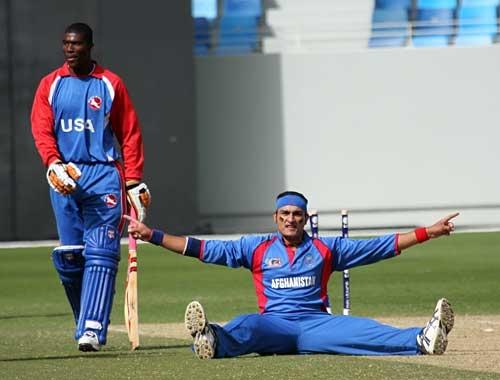A Test with the Afghans: Why BCCI Must Welcome the Neighbors Home

On Saturday, India start yet another Test match against Sri Lanka. Yawn! The Feroz Shah Kotla in Delhi will be largely empty, even though the captain, Virat Kohli, is a local boy in red hot form. Only hardcore fans, with nothing better to do at the weekend, will bother turning on the television.
Even the players seem vaguely bored. Up-and-coming allrounder Hardik Pandya, far from chomping at the bits to play his first home Test, asked to be left out of the thing, to rest. Fast bowler Bhuvneshwar Kumar skipped the previous game of the series to get married. Kohli himself has been muttering darkly about packed schedules.
The apathy isn’t hard to understand. This is the sixth Test the teams are contesting in just four months, across back-to-back, home-and-away series. Sri Lanka are a team in transition, and the matches have been predictably one-sided: of the five Tests so far, India have won four; three by an innings and one by 304 runs. Indeed, this two-series overload seems to have been forced into the calendar for reasons of contractual obligation and ICC politicking best known to the BCCI. From a cricketing point of view, the best that can be said is that it’s good preparation, glorified centre-wicket practice, for India’s upcoming South Africa tour. Whichever way you cut it, it’s a context-free, purposeless, interminable series that gives the grand old game of Test cricket a bad name.
Expanding Test cricket’s horizons
Now imagine an alternative scenario: instead of a second, shoehorned series against Sri Lanka, what if India had invited Afghanistan to play their first ever Test? The occasion would be historic. There would be a great deal of excitement in Afghanistan, where interest in cricket has been surging, mirroring its meteoric rise through the ICC’s tiers. We would find out if the teenage leggie Rashid Khan can take Test cricket by storm just as he has done in the IPL. Fast bowlers such as Hameed Hassan and Shapoor “Shoaib Akhtar” Zadran would get a chance to carry their World Cup form and joy into the game’s most testing format. Their swashbuckling batsmen can show us if their crash-bang-wallop style can cut it in a format that demands patience and technique. But, most of all, cricket (and India) would be playing a part in the healing of a society blighted by war and fundamentalism.
Of course, the BCCI’s invitee could be Ireland, who, along with Afghanistan, gained Test status in June this year. But somehow being welcomed into the small, elite club of Test nations may mean less to a peaceful, prosperous country, where cricket competes for attention with plenty of other sports, than to a society now known chiefly for the Taliban, and for being the victim of multiple imperialist invasions.
The board’s finest stroke
Before the BCCI’s transformation into a mighty machine this millennium, it took cricket’s ability to foster a better international community seriously. During the Apartheid era, it pointedly refused to play South Africa, in protest against the treatment of Indian-origin people in Durban and elsewhere. India was also one of the leading lights in the Gleneagles sporting boycott that weakened, and, ultimately, helped bring down the brutal white-supremacist regime.
And then, as Mandela was released from prison and Apartheid ended, the BCCI played the finest stroke in its entire history — it hurriedly arranged a three-match ODI series against South Africa at home. So hurriedly in fact that “coloured” uniforms had white flannels, day-night cricket was played with a red ball, and one ground had an athletic track around it.
No matter. One hundred thousand Bengalis, the most passionate sports fans in India, roared as the South Africans took the field for the their first-ever ODI at Kolkata’s iconic Eden Gardens. They cheered Allan “White Lightening” Donald’s debut five-fer every bit as much as India’s ultimate win. A quarter-century later, the South Africans who played in that match still remain overwhelmed by the reception they received. The experience so moved the new racially-unified South African cricket board that they insisted that India accept the honour of being their first Test opponents at home. The resultant “Friendship series” was played in a somewhat acrimonious spirit between the players, but the centuries-old bonds between the two peoples were undoubtedly strengthened.
That Indian tour of southern Africa also featured a brief stopover at Harare for Zimbabwe’s first Test. A few years later, India repeated the feat by also featuring in Bangladesh’s first Test — a game that saw sell-out crowds and helped fuel cricket’s rise in Bangladesh as its biggest sport, ahead of football, the traditional powerhouse.
Sport’s larger purpose
The Dhaka Test was held in 2000, around the time the BCCI began to see itself predominantly as a commercial enterprise, more concerned about television ratings and short-term earnings, than serving cricket’s larger purpose. So, for a further sixteen years, they failed to invite their neighbours next-door to play a Test. Even bilateral ODIs, a format Bangladesh is stronger at, have been rarer than dodo sightings.
When at long last, there was a India-Bangladesh Test on Indian soil last year (a solitary affair in Hyderabad), the board’s president declared: “As a leading Test-playing nation, it is BCCI’s responsibility to give opportunity to every Test-playing nation.”
To live up to those lofty words, the board needs to now arrange an inaugural Test against Afghanistan, even if they may not do that well initially. Test cricket is an art form that takes decades to master — New Zealand didn’t win a match in their first 26 years as a Test nation, and after 70 years of trying, India are yet to win a Test series in Australia.
Although Zimbabwe and Bangladesh performed creditably in their inaugural Test, we shouldn’t expect Afghanistan to be more competitive than how Sri Lanka have been recently. India have one of the strongest teams in their history, and despite the retirements of titans such as Kumar Sangakkara and Mahela Jayawardene, the Lankans have much more experience and technical proficiency than the Afghans.
But competitiveness is only a part of it. Ultimately, the issue is if the BCCI is prepared to help develop Test cricket in other countries. The question is if it is serious about using sport to build a better world, or if it views cricket merely as an “entertainment product” to profit from. For now, its stance, implicitly, is clear. So we have to endure a further six white ball games against Sri Lanka after the Kotla Test. Mercifully it all ends before the year does.
Get the latest reports & analysis with people's perspective on Protests, movements & deep analytical videos, discussions of the current affairs in your Telegram app. Subscribe to NewsClick's Telegram channel & get Real-Time updates on stories, as they get published on our website.
























